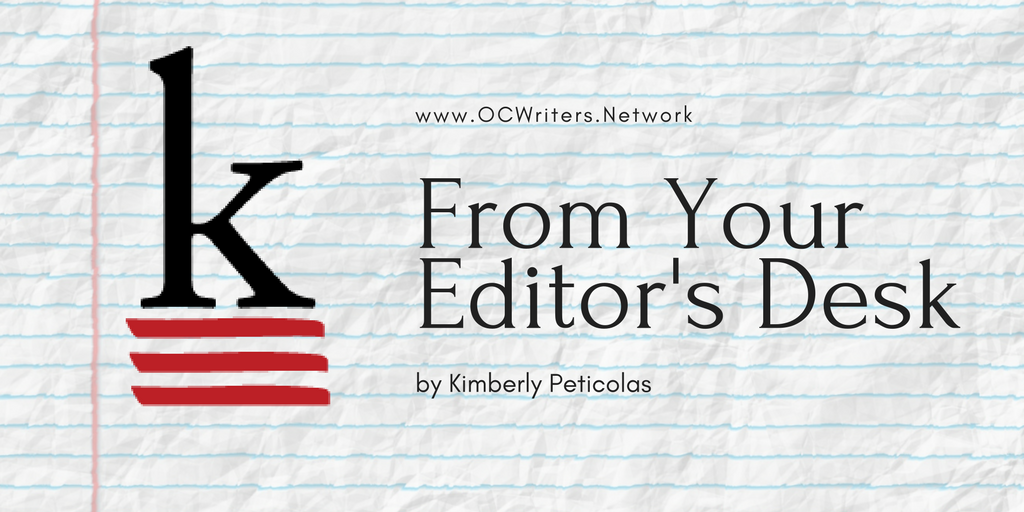by Kimberly Peticolas
Muliebrity: the quality of being a woman (Merriam-Webster Definition)
With all that is happening in the world, there is a growing awareness of the need in our culture for strong women, both in real life and in fiction. The kick-ass heroine is admittedly one of my favorite archetypes, but I’m also seeing some books that go too far, creating an unattainable—and therefore two-dimensional—ideal character.
I don’t know where this quote originated, but I’ve always remembered it: the character is in the flaws.
Flaw: Quirk, Peccadillo, Vulnerability
Don’t get too hung up on the term ‘flaw’, I don’t necessarily mean it as a negative. Instead, it is the quirks, peccadillos, insecurities, and vulnerabilities that make someone interesting. It could also be more typical flaw-like traits as well—criminal activity, biases, etc. Your characters, main or secondary, will always be rather flat without these traits.
Being a woman is complex. We all have flaws and things that some find annoying, and others find charming. They are a part of us and they make us who we are, just as our history and experiences do. It is part of being a real person. And if you reflect on your favorite characters in literature, I bet you can list the flaws of each one. In fact, I bet they are a large part of why you like that character. We tend to like characters who share similar traits or struggles, or are the type of person we want to be. But who can relate to the perfect person?
Classic Flawed Female Characters
Let’s look at some classics:
– Anne Shirley (of Green Gables) – She’s a chatterbox, has an overactive imagination, is incredibly stubborn, and is lacking in confidence concerning her appearance. And yet, that’s all part of her charm, and some (but not all) of those traits function as both quality and flaw.
– Emma Woodhouse – Vain and prideful, she is often criticized for her nosiness, her self-importance, and her refusal to acknowledge what she does not wish to see. And yet, those flaws do not negate her good qualities nor the good intentions behind her actions.
– Hermione Granger – She’s a bit of a know-it-all, a bit of a teacher’s pet, and occasionally rather manipulative. She also has some deep-set insecurities about failure, and about how to deal with her feelings for Ron. And yet, she totally owns her nerdy qualities, and her flaws make her stronger and better able to help her friends.
Strong Female Leads
These female characters are all strong leads. They may not be kick-ass in the traditional sense necessarily, but their inner strength comes through in spite of—and really because of—their flaws. They are vulnerable and weak at times. Women have struggles and obstacles, but it does not diminish their strength, nor do their moments of true power diminish their femininity. The qualities of women are complex and varied. Honor that by ensuring your female characters have the full range of muliebrity.
***

Kimberly Peticolas, Author Coach
Kimberly Peticolas is an experienced editor, writing coach, and consultant working with clients from a variety of backgrounds. No matter your publishing goals, she’s here to help you achieve your writing dreams. With a la carte services ranging from one-on-one author coaching to detailed manuscript editing or proofreading, even extra help to improve your writing skills, Kim has you covered.


Ah! I have a quirk of always wearing white on my feet. I hardly ever wear black shoes, and if I do wear black or brown, it generally has to be as a boot. I think my Katy is going to have this quirk in my 60’s novel, although I’m not quite sure why as yet! Thanks for the examples to stimulate our thinking! Great article.
Muliebrity…LOVE this word, Kim! It sounds like “mule-ish celebrity,” which calls to mind the steadfastly cheerful way most of us approach life. Writer Elizabeth Gilbert’s personal motto is “stubborn gladness,” which she tattooed on her wrist to remind her that creativity is always a work in progress. Nice post.